- Official Name: Casa Milà
- Status/Function/Attraction Type: Private Residence
- Location: Pg. de Gràcia, 92, 08008 Barcelona, Spain
- Founded: 1905
- Area: 1323 m2 per floor (9 floors)
- Architectural Style: Modernisme
- Main Architect: Antoni Gaudí
Barcelona is home to many stellar buildings designed by Antoni Gaudí. Casa Milà, a Modernista building built as a private residence, is just one of them. The building was commissioned by wealthy couple Pere Milà and his wife Roser Segimón in the year 1906 as their private residence. It took four years to complete the building.
There are many Catholic elements found in the architecture of the building, as the architect was a devoted Catholic. When it was built, Casa Milà was applauded and criticised. Its unconventional architectural style raised many eyebrows, while critics lauded Antoni Gaudí for his innovation and bold ideas that he brought to fruition. Today, Casa Milà is among the most celebrated works of Antoni Gaudí and has become an iconic landmark in Barcelona, visited by more than 1,000,000 tourists each year.
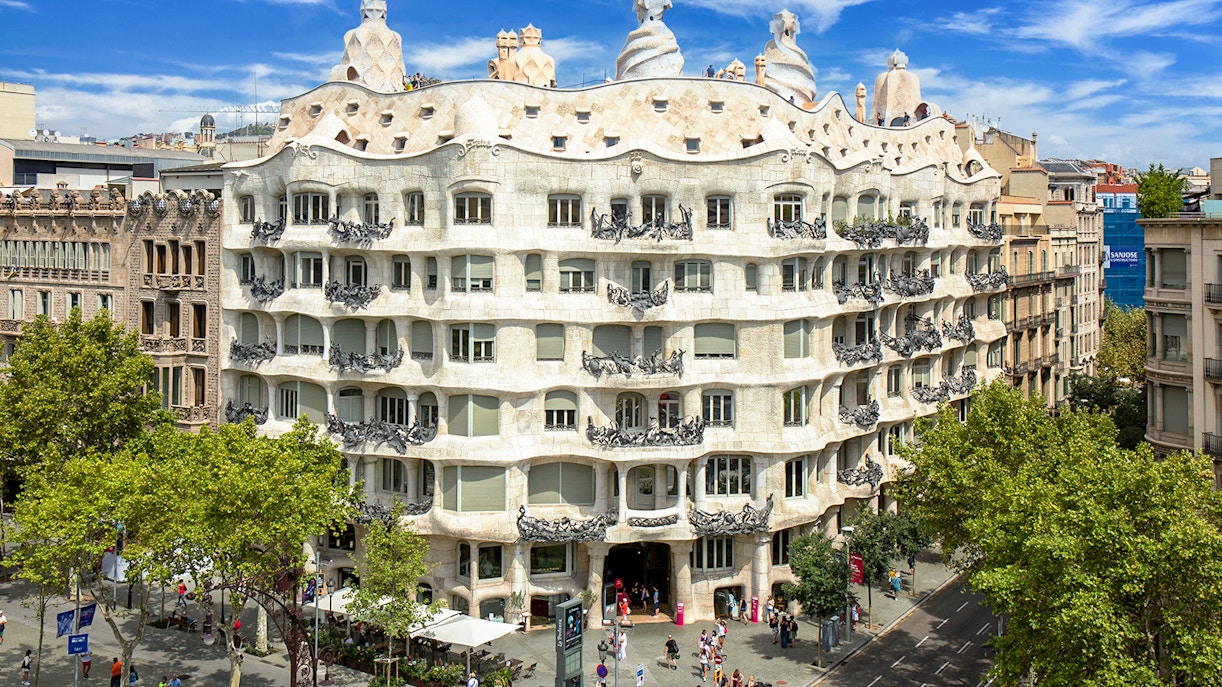

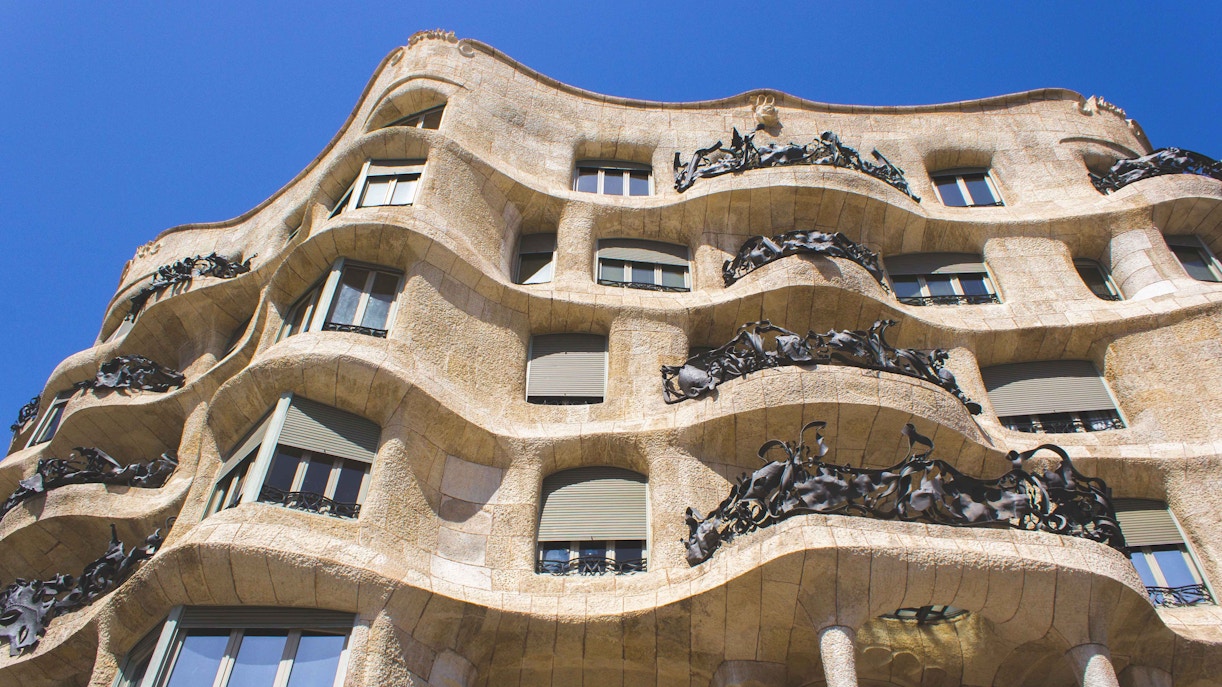
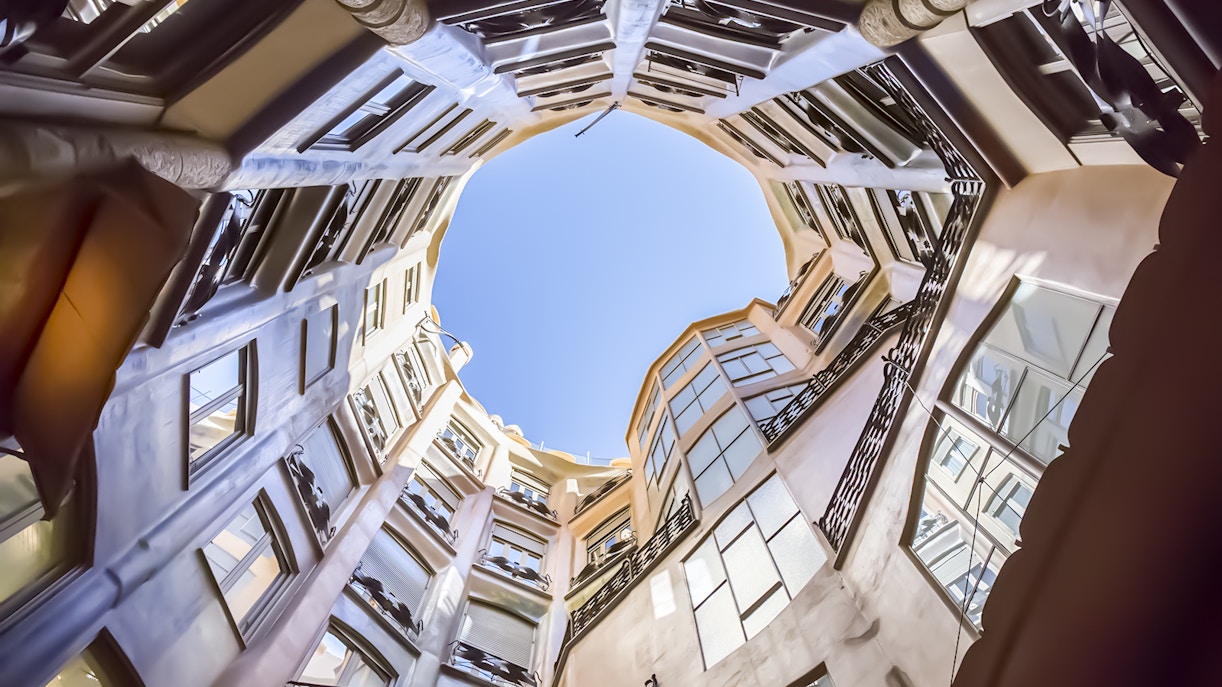
Pere Milà and Roser Segimón married in 1905 and purchased land. Soon, they commissioned Antoni Gaudí to build a private residence. This would be the last project Antoni Gaudí undertook before completely devoting himself to building an expiatory temple inside La Sagrada Familia.
Antoni Gaudí used lime, bricks, marble pieces and ceramics to build the structure. Iron grilles, sheets, bars and chains were used to build a strong foundation to ensure the structure was well-supported. Marble was intricately used in the design, while the stone was sourced in bulk from Vilafranca del Penedès.
The final design was presented to the couple by Antoni Gaudí. He started working on Casa Milà with his team of engineers, artists, painters and sculptors. It took four years to complete the project. The roof was added in the end. By 1911, the couple had moved in on the main floors with the intention of renting out the other floors.
Due to its unusual style of architecture, people in the neighbourhood feared that Casa Milà would bring down the property rates of other houses in the building. The couple blocked the final payment that was supposed to be made to Gaudí. He eventually went to court and won the case. Casa Milà went on to become Antoni Gaudí’s most celebrated work.
Casa Milà’s windows look like a wave from the outside. It is beautifully designed, with a huge facade made out of stone. There are three parts to the exterior of Casa Milà. Here is how each of them is designed.
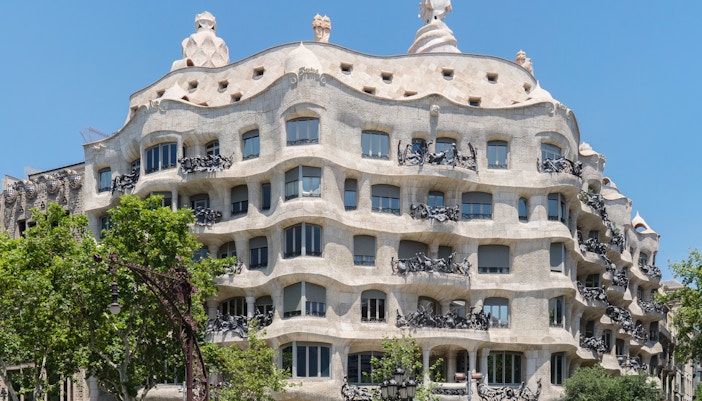
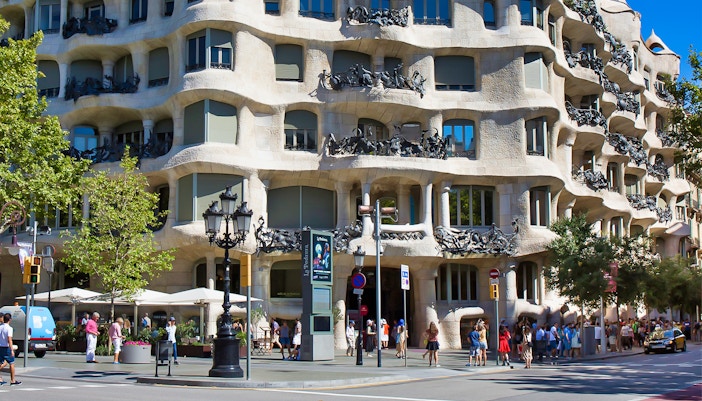

Casa Milà is just as spectacular from the inside as it is from the outside. With extravagant furniture, entrance halls, a well-designed roof and 16 apartments, including the apartment floor of the couple, let’s take a look at what is inside Casa Milà.
Casa Milà may not have been appreciated much when it was built, but it is a living example of Antoni Gaudí’s genius. On your trip to Barcelona, there is no way you can miss this. Book your entrance tickets and explore every corner of Casa Milà to the fullest.
La Pedrera-Casa Milà Skip-the-Line Tickets with Audio Guide
2 Houses of Gaudí: Casa Milà + Casa Batlló Tickets
Combo (Save 2%): Park Güell + La Pedrera-Casa Milà Skip-the-Line Tickets
La Pedrera-Casa Milà Night Guided Tour
La Pedrera-Casa Milà Guided Sunrise Tour
Combo: La Pedrera-Casa Milà + Aquarium Tickets
A. Casa Milà in Barcelona was built in the Modernisme style, also known as Catalan modernism architecture.
A. Casa Milà was designed by renowned Spanish architect Antoni Gaudí.
A. Casa Milà’s architecture is famous for its unconventional style and wave-like appearance from the outside. It is one of the most celebrated works of Antoni Gaudí.
A. Casa Milà was inspired by the Modernista movement in Catalan. Antoni Gaudí wanted to use natural elements to make this private residence, incorporating art and sculpting into his design work.
A. Construction of Casa Milà began in 1906 and was completed by 1910.
A. Casa Milà is 111 years old, built between 1906 to 1910.
A. Casa Milà has 16 apartments, a rooftop, a museum dedicated to Antoni Gaudí, two patios, wall paintings and antique furniture that belonged to the owners of the building.
A. The most iconic part of the exterior is the facade. The entrance gates resemble branches of a tree, while the patios or courtyards were built to ensure ample light and ventilation for the 16 apartments.
A. The interior of Casa Milà includes 16 apartments, a roof, entrance halls, the attic, a museum, and furniture that were once owned by Pere Milà and his wife, Roser Segimón.
A. Casa Milà is built on a plot of 1620 m2. It has nine floors, a basement and a roof.
A. Each floor of Casa Milà takes up 1323 m2 of area.
A. Casa Milà was made using stone, brick, limestone, marble, iron grilles, iron bars and iron sheets.
A. Yes, La Padrera at Night is a part of Casa Milà. It includes audiovisual shows that take you through different parts of the building, its history and the works of Antoni Gaudí.
A. Catalunya La Pedrera Foundation, the owners of the building, organises La Pedrera at Night.
A. To save time and money, you must buy your tickets online and get skip-the-line access to one of the most iconic landmarks in Barcelona. Click here to buy.












